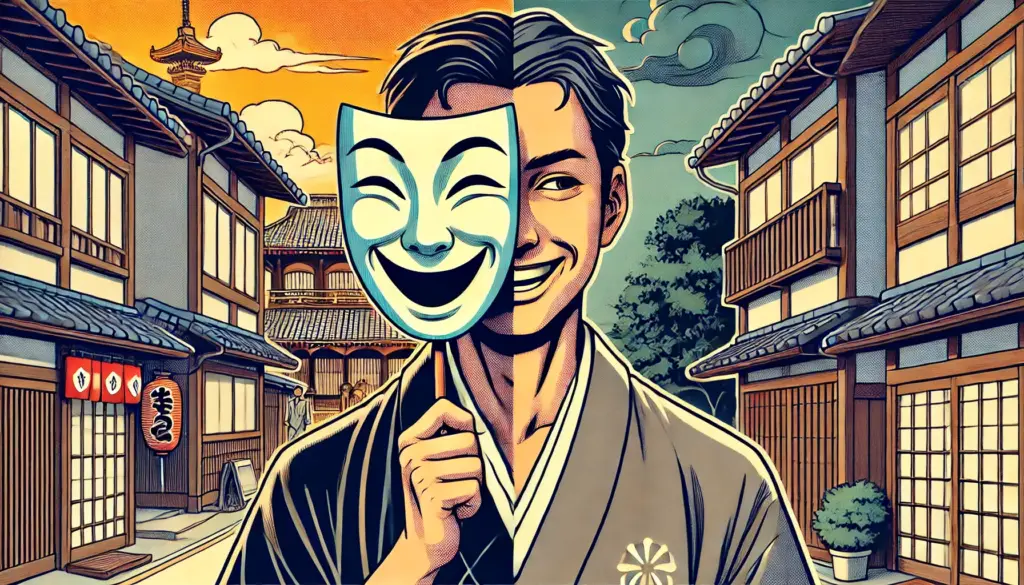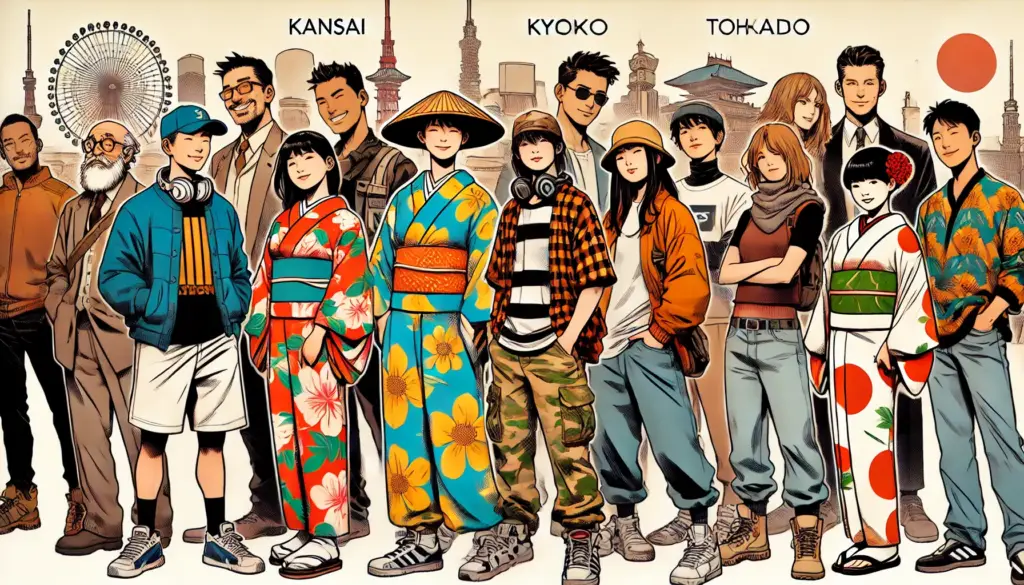
When people think of Kyoto, they often imagine serene temples, elegant kimonos, and warm hospitality. But visitors who spend time with the locals soon discover a subtle and mysterious layer of communication hidden beneath the surface. This isn’t just politeness — it’s a refined form of verbal chess, honed over centuries of aristocratic culture. And sometimes, it bites.
While the rest of Japan might value harmony and indirectness, Kyoto takes these to a whole new level. In fact, Kyoto’s linguistic style is so nuanced that even native Japanese from other regions often say, “I don’t know if that was a compliment or an insult.”
In this article, we explore the cultural reasons why Kyoto people are famous for their sarcastic politeness, how this communication style evolved, and why decoding their words can feel like trying to read poetry — upside down. 😌
Kyoto’s Language: A Surface of Elegance, a Core of Ambiguity
Unlike the straightforward expressions common in other regions, Kyoto’s local speech — part of the broader Kansai dialect family — is known for its extreme politeness, softness in tone, and ambiguity in meaning. But this isn’t just about being nice.
In Kyoto, what is said often matters far less than how it’s said — and what’s not said.
The result is a style of communication that may appear calm and elegant to the untrained ear, but in reality, is loaded with double meanings, passive aggression, and veiled criticism. Many Japanese people even refer to this as “Kyoto-style sarcasm” — a linguistic game of sugar-coated daggers.
Why Is Kyoto Speech So Indirect — and Often So Sarcastic?
To understand the roots of this complex speech style, one must look at the city’s historical and social background.
🏯 1. Legacy of the Imperial Court
Kyoto was the imperial capital of Japan for over 1,000 years. Court life emphasized graceful behavior, subtle emotion, and the art of suggestion. Speaking directly was often seen as rude or lacking refinement.
🤐 2. Culture of Restraint and Face-saving
In a society where direct confrontation was frowned upon, Kyoto people learned to express disagreement or rejection without offending. Over time, this evolved into a highly refined form of indirect speech that masks intent beneath politeness.
🏘 3. Strong “Insider vs. Outsider” Dynamics
Kyoto has long been a closed cultural ecosystem. Locals take pride in preserving their traditions — including the way they speak. Outsiders are often treated with exaggerated politeness, but that doesn’t necessarily mean they’re welcome.
🎭 4. Verbal Aesthetics Over Efficiency
In Kyoto, how something is said is often more important than what is said. Clever wordplay, graceful phrasing, and layered meanings are considered signs of intelligence and good upbringing.
When Kindness Isn’t Always Kind: Social Scenarios
Even without quoting specific phrases, we can describe common situations where sarcasm and double meaning are frequently at play:
- Polite Rejections: When invited to an event or offered something unwanted, Kyotoites often respond with gentle-sounding words that technically mean “maybe,” but actually mean “absolutely not.” Outsiders may leave thinking the invitation was accepted.
- Overly Warm Praise: Compliments in Kyoto often contain a hidden judgment — especially when the praise feels a bit too enthusiastic or formal. In many cases, it’s a subtle way of pointing out a mistake or a questionable choice.
- Third-party Commentary: When speaking about others, locals often use extremely respectful tones — especially when referring to someone they don’t particularly like. This heightened politeness can be a form of criticism, not admiration.
- “Safe” Criticism Through Comparison: Instead of saying something is bad, locals may compare it to something “slightly better,” suggesting inferiority without directly pointing it out.
- Public Face, Private Intent: Someone might agree with you in public, only to quietly ignore the agreement in private — a trait that many non-Kyoto Japanese find frustrating or untrustworthy.
The Outsider Experience: Why Kyoto Can Feel “Cold”
For newcomers — whether Japanese from Tokyo or tourists from abroad — Kyoto’s communication style can feel passive-aggressive or even two-faced. People who expect directness or Western-style honesty might walk away feeling confused or slighted, unsure of whether they were genuinely welcomed or politely dismissed.
Many Japanese people describe interactions with Kyoto locals as:
- “So polite it’s scary”
- “Beautiful, but exhausting”
- “I thought they liked me — but I was wrong”
But to locals, this isn’t sarcasm in the Western sense. Rather, it’s a linguistic armor, shaped by centuries of social complexity.
Linguistic Self-Defense: Why Kyotoites Talk This Way
There’s a reason Kyoto dialect hasn’t softened in the age of globalization. It’s not just about tradition — it’s also a protective mechanism. Here’s why:
- 🌸 It protects social harmony: Politeness is a way to avoid conflict, even when deep disagreement exists.
- 🎎 It preserves social hierarchy: Word choices subtly reinforce relationships, age differences, and social status.
- 🔐 It keeps outsiders at arm’s length: By using ambiguous language, locals maintain emotional and cultural distance from those not born and raised in Kyoto.
In short, this speech style is a refined art of saying without saying — and it’s one of the most Kyoto things about Kyoto.
Can You Learn to “Speak Kyoto”?
You might be wondering: is it possible for non-locals to learn and use Kyoto’s unique speech style?
The short answer: not really — and you probably shouldn’t try.
While it’s valuable to understand the meaning behind the words, using Kyoto-style language without the right cultural context can come off as insincere, rude, or even mocking. Instead, appreciate it as a form of verbal craftsmanship, and respond with sincerity and curiosity.
What This Teaches Us About Communication
Kyoto’s sarcastic politeness reminds us that language is culture. Words aren’t just tools for information — they’re tools for survival, identity, and social structure.
In Kyoto, every word is carefully chosen, every phrase polished with centuries of tradition. To understand the true meaning, you must listen not only with your ears, but with your cultural intuition.
It’s a city where silence can speak louder than words, and politeness can sting more than insults.
Final Thoughts: Beauty and Bite in Every Word
Kyoto remains a city of contradictions — timeless but evolving, welcoming yet guarded, polite yet cutting. Its language captures all these layers with elegant precision. Whether you’re sipping matcha in a tea house or chatting with a local at a bus stop, remember: the real meaning might not be in what was said — but in how it was said.
So next time you hear a sweet-sounding comment from a Kyotoite, pause for a moment. Beneath the politeness, there just might be a whole different story. 😉





















































